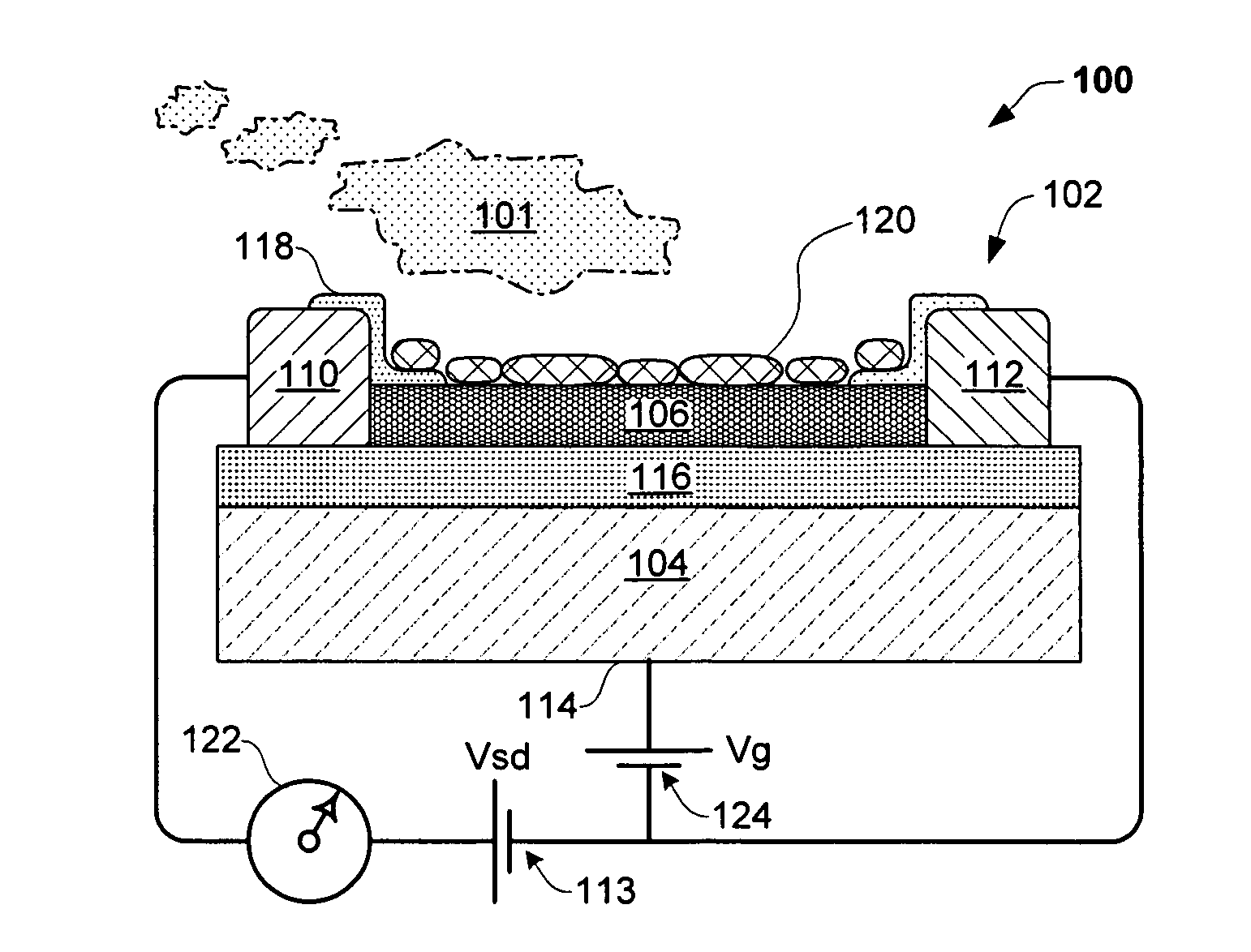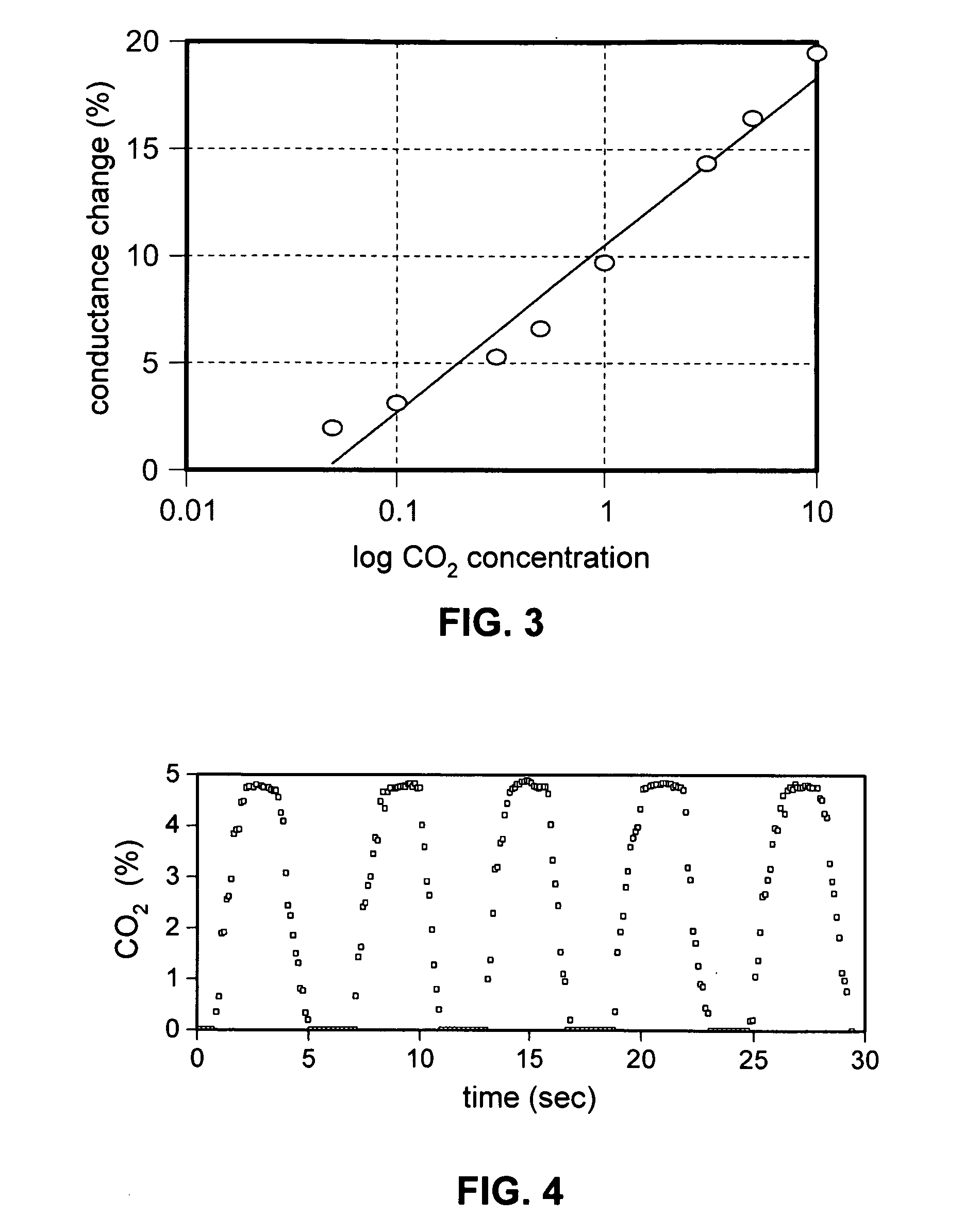Carbon dioxide nanosensor, and respiratory CO2 monitors
a carbon dioxide and nanosensor technology, applied in the field of nanostructured sensor systems, can solve the problems of limited use of these sensors, limited use of current cosub>2 /sub>sensors restricting the use of capnography, bulky and expensive non-dispersive, etc., to achieve the effect of reducing the cost of the sensor component, and low power consumption
- Summary
- Abstract
- Description
- Claims
- Application Information
AI Technical Summary
Benefits of technology
Problems solved by technology
Method used
Image
Examples
Embodiment Construction
Nanosensor Architecture
[0065]FIG. 1. shows an exemplary electronic sensing device 100 having aspects of the invention, for detecting an analyte 101 (e.g. CO2, H2 or NO, and the like), comprising a nanostructure sensor 102. Sensor 102 comprises a substrate 104, and a conducting (e.g., semiconducting) channel or layer 106 comprising a nanostructure material, such as a nanotube or network of nanotubes, disposed on the substrate. The nanostructure material 106 may contact the substrate as shown, or in the alternative, may be spaced a distance away from the substrate, with or without a layer of intervening material.
[0066] In an embodiment of the invention, conducting channel 106 may comprise one or more carbon nanotubes. For example, conducting channel 106 may comprise a plurality of nanotubes forming a mesh, film or network. Certain exemplary embodiments having aspects of the invention include nanostructure elements which may be made using chemical vapor deposition (CVD) and tradition...
PUM
| Property | Measurement | Unit |
|---|---|---|
| thick | aaaaa | aaaaa |
| thick | aaaaa | aaaaa |
| thick | aaaaa | aaaaa |
Abstract
Description
Claims
Application Information
 Login to View More
Login to View More - R&D
- Intellectual Property
- Life Sciences
- Materials
- Tech Scout
- Unparalleled Data Quality
- Higher Quality Content
- 60% Fewer Hallucinations
Browse by: Latest US Patents, China's latest patents, Technical Efficacy Thesaurus, Application Domain, Technology Topic, Popular Technical Reports.
© 2025 PatSnap. All rights reserved.Legal|Privacy policy|Modern Slavery Act Transparency Statement|Sitemap|About US| Contact US: help@patsnap.com



